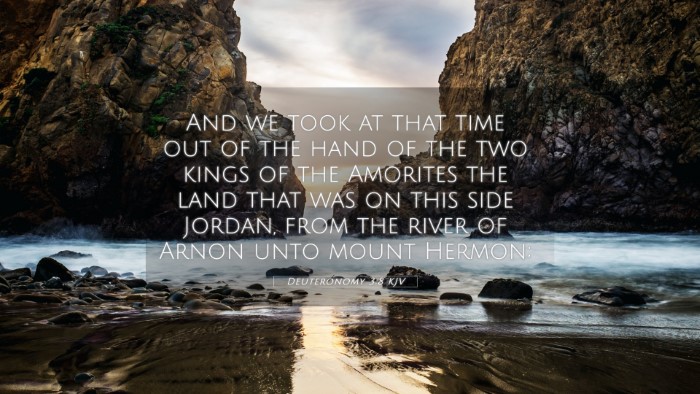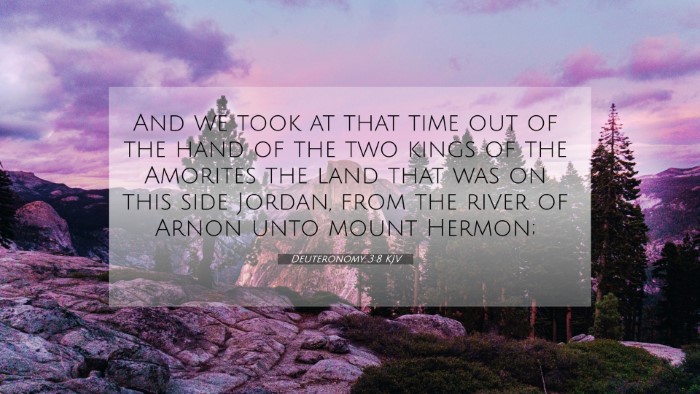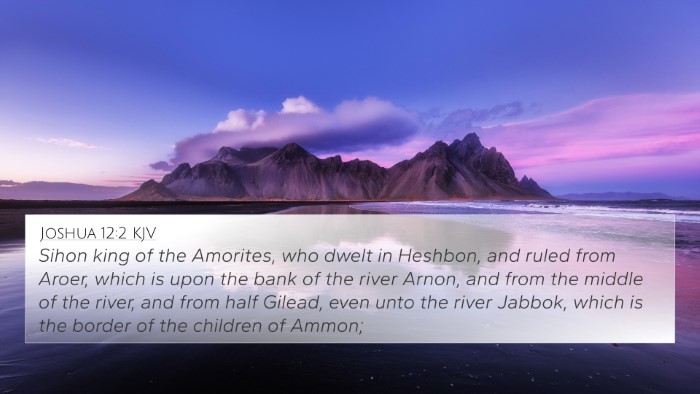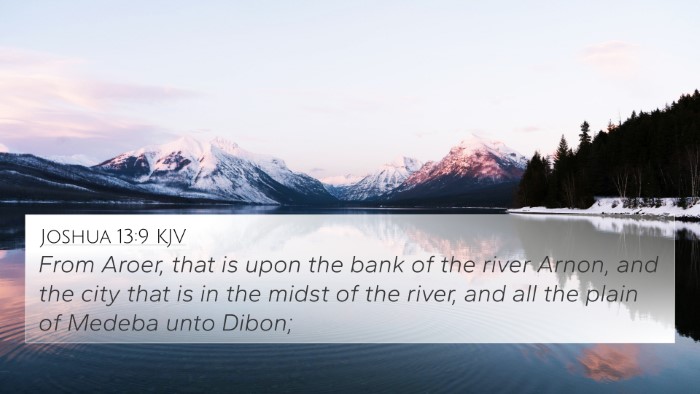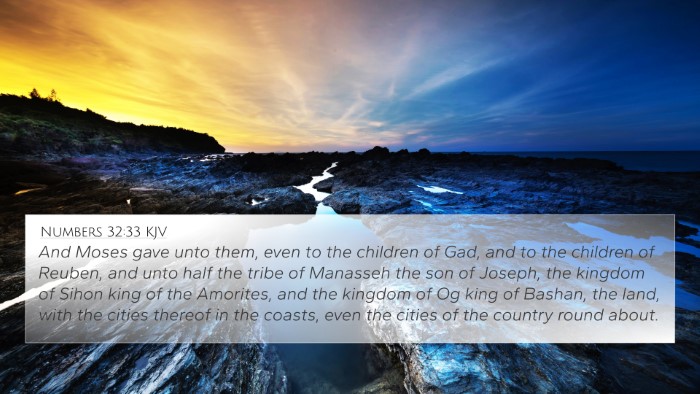Understanding Deuteronomy 3:8
Verse (Deuteronomy 3:8): "So we took the land at that time out of the hand of the two kings of the Amorites, which was on this side Jordan, from the river of Arnon unto mount Hermon."
This verse is a declaration of Israel’s conquest of the territory previously held by the two Amorite kings, Sihon and Og. The conquest not only signifies the physical gain of land but also the fulfillment of God's promise to the Israelites.
Summary of Insights
This verse captures a pivotal moment in Israel's journey, highlighting:
- Divine Assistance: The victory was not merely a result of military strength, but due to the help of God, as emphasized by Matthew Henry's commentary.
- Historical Context: Adam Clarke delves into the historical implications of this conquest, noting it as a crucial step towards the ultimate possession of Canaan.
- Geographical Significance: The mention of the River Arnon and Mount Hermon provides readers with specific geographical markers that frame the narrative, allowing for a better understanding of the region's dynamics.
Cross-Referencing Biblical Texts
Understanding this verse benefits from connecting it to related scriptures. Here are key cross-references:
- Numbers 21:21-35: The narrative of Israel's battles against Sihon and Og, providing more detail about the conquests.
- Joshua 12:1-6: A summary of the defeated kings of the Amorites, affirming the land taken by the Israelites.
- Deuteronomy 2:24-37: God's command to dispossess these kings, showing divine decree in the conquest.
- Psalm 135:10-12: Acknowledgment of God's actions against nations, reinforcing Israel’s conquests as part of His divine plans.
- Romans 8:31: "If God is for us, who can be against us?" This verse correlates with the theme of divine intervention during the Israelites' struggles.
- Hebrews 11:32-34: Mention of the faith of Israel's leaders in overcoming challenges because of belief in God's promises.
- Joshua 1:2: The transition of leadership from Moses to Joshua as the Israelites prepare for the conquest of Canaan.
- 1 Corinthians 10:11: Learning from the experiences of the Israelites, which includes their victories and struggles in the Promised Land.
- Hebrews 4:3: The rest that God promised to His people, relating it to the land that the Israelites fought to possess.
- Isaiah 28:21: God's purpose in administering justice, similar to the divine judgment enacted through Israel's conquests.
Connections between Bible Verses
The connections between these verses create a richer understanding of the historical and theological context of Deuteronomy 3:8. The following points highlight the importance of these connections:
- Thematic Connections: The theme of divine assistance in Israel’s victories is evident across both Old and New Testaments, suggesting a cohesive narrative of faith and reliance on God.
- Historical Links: Linking narratives from different books reinforces the historical continuity of Israel's journey and God's unwavering presence with His people.
- Comparative Analysis: By comparing the accounts in Numbers and Joshua with Deuteronomy, one can discern layers of meaning regarding obedience and fulfillment of God’s promises.
Conclusion
Deuteronomy 3:8 serves as a critical piece in the larger puzzle of Israel’s history, reminding readers of God's mighty hand in delivering His people. The conquests symbolize not just territorial expansion but a deeper spiritual truth about reliance on divine strength. Engaging with this verse through cross-referencing allows believers to see the interconnectedness of scripture, revealing deeper insights into God's ultimate purpose for His chosen people.
Tools for Bible Cross-Referencing
Utilizing these tools can enhance understanding of scripture:
- Bible Concordance: A comprehensive alphabetical index of words found in the Bible, useful for locating specific themes.
- Cross-Reference Bible Study: Methods that help identify connections between verses for deeper exploration.
- Bible Reference Resources: Access to scholarly and layperson guides to explore biblical texts collectively.
- Bible Cross-Reference Guide: Resources that systematically link verses to help understand themes and contexts.
How to Find Cross-References in the Bible
To engage deeply with biblical texts:
- Examine footnotes and marginal notes in your Bible.
- Utilize digital Bible tools that provide cross-referencing capabilities.
- Study thematic indices or topical Bibles to find related verses.

